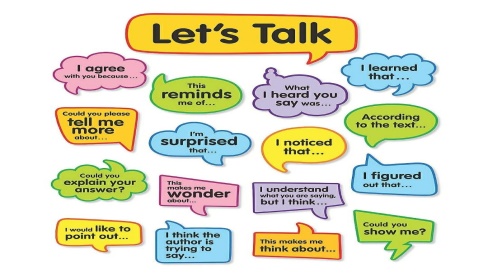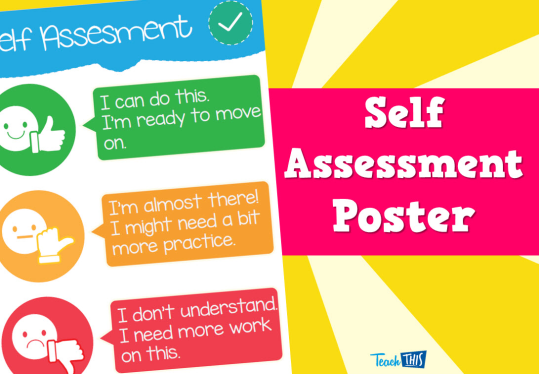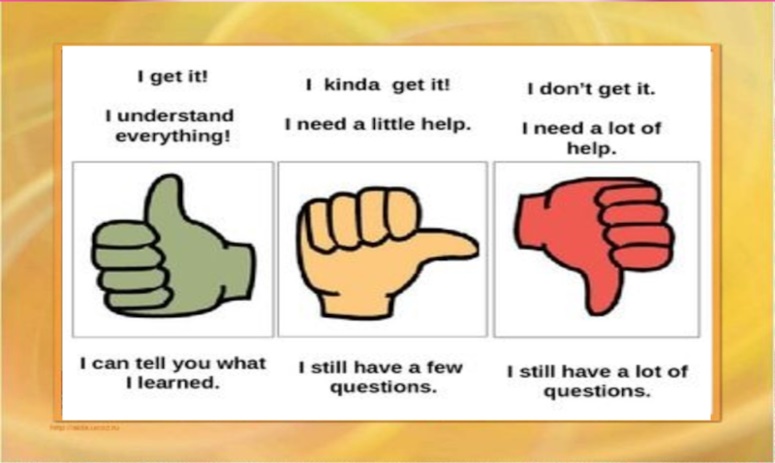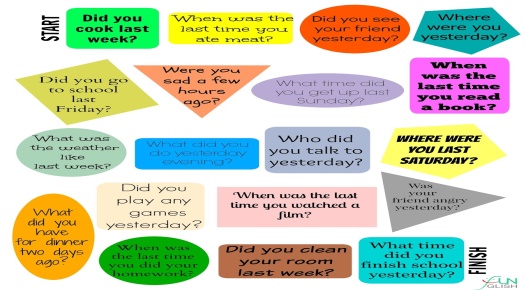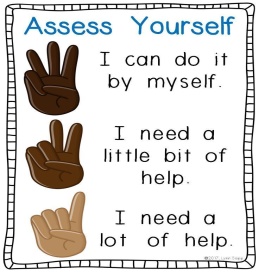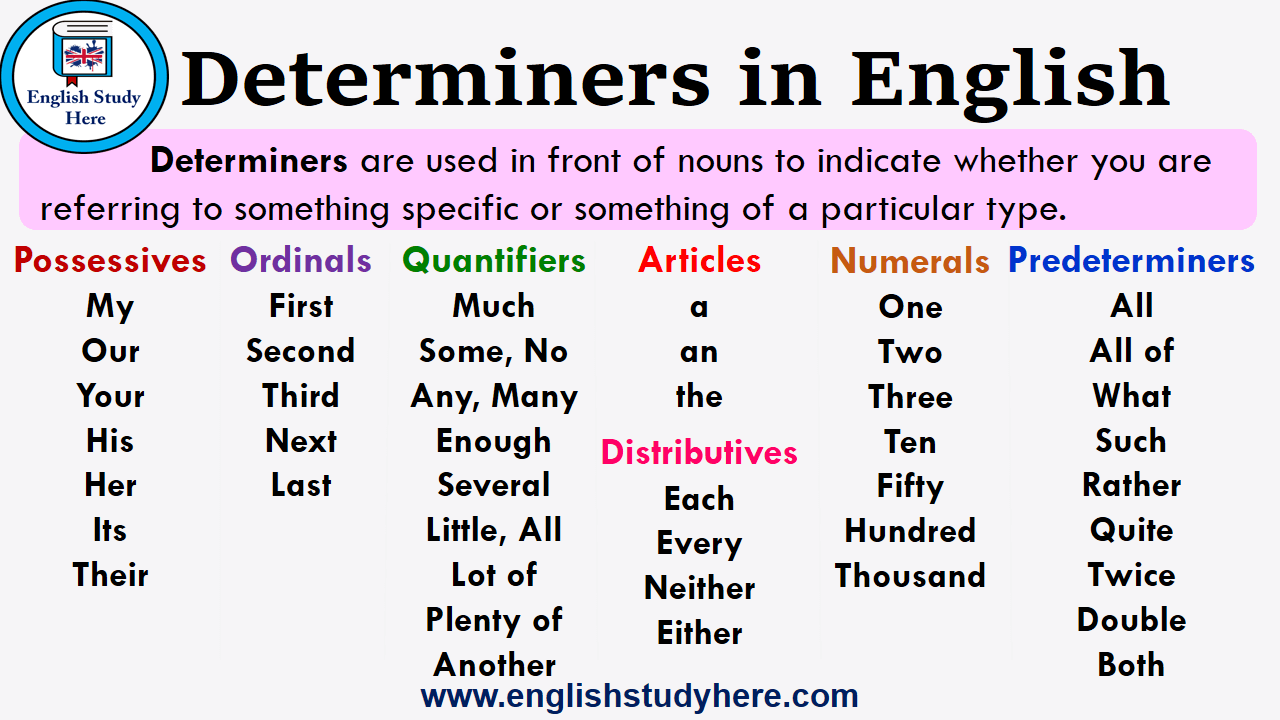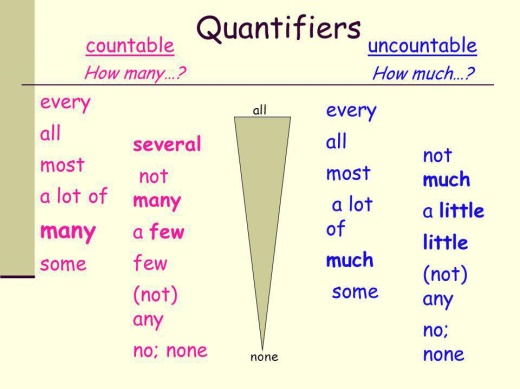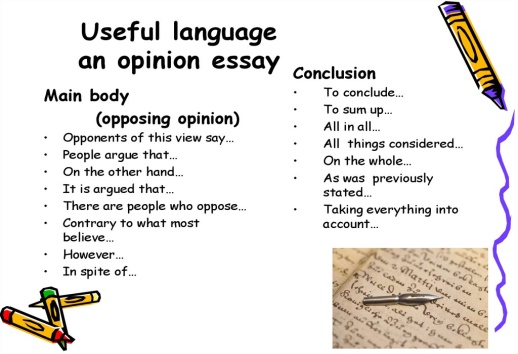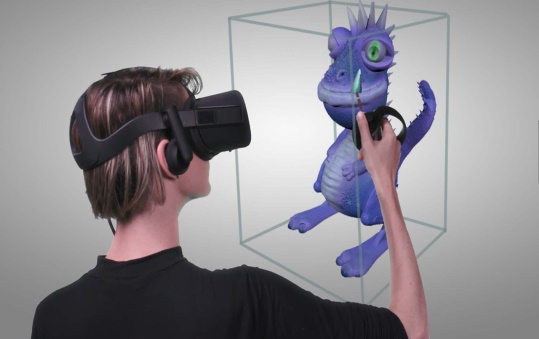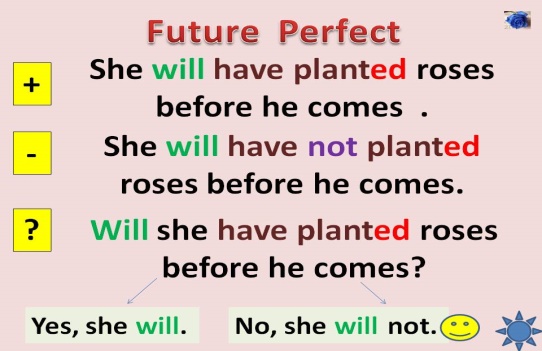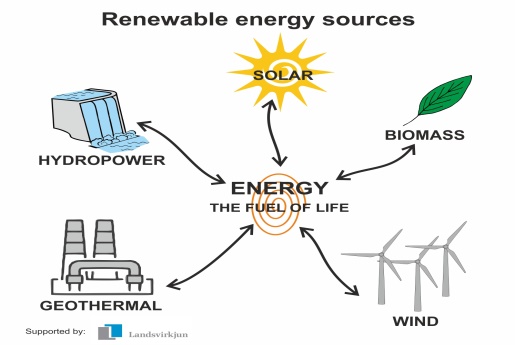Назар аударыңыз. Бұл материалды сайт қолданушысы жариялаған. Егер материал сіздің авторлық құқығыңызды бұзса, осында жазыңыз. Біз ең жылдам уақытта материалды сайттан өшіреміз
Жақын арада сайт әкімшілігі сізбен хабарласады

Бонусты жинап картаңызға (kaspi Gold, Halyk bank) шығарып аласыз
10 сынып Action 2 токсан
Дипломдар мен сертификаттарды алып үлгеріңіз!


Материалдың толық нұсқасын
жүктеп алып көруге болады
Short term plan: term 2
|
Unit: 3 Virtual reality |
Lesson 25 |
||
|
Teacher name: |
|
||
|
Date: |
|
||
|
Grade: 10 |
Number present: |
absent: |
|
|
Lesson title |
Virtual reality; Application of virtual reality |
||
|
Learning objectives |
10.1.5.1 - use feedback to set personal learning objectives; 10.2.1.1 - understand the main points in unsupported extended talk on a wide range of general and curricular topics, including talk on a limited range of unfamiliar topics; |
||
|
Lesson objectives |
Learners will be able to: - introduce the topic of virtual reality - practise vocabulary relating to applications of virtual reality |
||
|
Plan |
|||
|
Stages / Time |
Teachers actions |
Students actions |
Assessment criteria |
Resources |
|
Beginning of the lesson Warming-up 3 min. Pre-learning «Brainstorming» method 7 min. |
Organization moment : 1.Greeting. Ask about the weather. The teacher sets the lesson objectives, letting students know what to anticipate from the lesson. Warm-Up
Students talk about different things. Lead – In
What do you imagine about VR? |
The aim: To develop pupils speaking skills and create friendly atmosphere Efficiency: By wishing each other they feel better and feel the support of others Students of the class are listed. Students' attention is drawn to the lesson. Students say different words from the picture •Learners remember previous lesson vocabulary •Learners answer the questions |
The teacher to assess learners for their ability. “Good job! Well done!” Formative Assessment
Good job! Descriptor: - remembers the lesson passed Point 1 Assessment criteria make basic statements related to personal information, people and objects |
Pictures worksheet Picture |
|
Middle of the lesson Presentation part. 30 min |
Ex:1 P:35 • Read the definition aloud and explain/elicit the meanings of any unknown words. Then ask what Ss know about VR and what we use it for. Ask Ss to discuss in pairs and then ask some Ss to share their answers with the class. Ex: 2 P: 35 • Ask Ss to work in pairs or small groups and match the pictures to the applications. Elicit answers from around the class. Conclusion during the lesson some tasks differentiated by outcomes of the students and by their abilities. |
• Learners read the following definition. Answer the question. ANSWERS VR uses computer technology to create realistic images and sounds that allows someone through a headset to feel like they are in a virtual or imaginary environment. We use VR for entertainment, healthcare, art and education purposes. • Learners match the applications of VR to the pictures. ANSWERS 1 B 2 F 3 E 4 A 5 C 6 D |
Descriptor: - read the following definition -answer the question Total: 3 point
Self assessment Differentiation: «Verbal support» method is used to help Ss use new words in the sentences. Descriptor: - match the applications of VR to the pictures. Total: 3 point -Make CCQ questions Yes / No |
Card Worksheet Students book |
|
End of the lesson 5 min |
FEEDBACK Learners provide feedback on what they have learned at the lesson. Ex: P: Home task: Write the days |
|
Poster Success
|
|
Short term plan: term 2
|
Unit 3 Virtual reality |
Lesson 26 |
||
|
Teacher name: |
|
||
|
Date: |
|
||
|
Grade: 10 |
Number present: |
absent: |
|
|
Lesson title |
Products of the future |
||
|
Learning objectives |
10.2.8.1 - recognize inconsistencies in argument in extended talk on a range of general and curricular subjects; 10.3.5.1 - interact with peers to make hypotheses about a wide range of general and curricular topics; |
||
|
Lesson objectives |
Learners will be able to: - present new vocabulary - listen and read for gist |
||
|
Plan |
|||
|
Stages / Time |
Teachers actions |
Students actions |
Assessment criteria |
Resources |
|
Beginning of the lesson Warming-up 3 min Pre-learning «Brainstorming» method 7 min. |
Organization moment : 1.Greeting. Ask about the weather. The teacher sets the lesson objectives, letting students know what to anticipate from the lesson. Warm- Up
Ask a few pupils to stand up and stand in a row. Ask the rest of the class questions to revise the ordinals. Lead – In
|
The aim: To develop pupils speaking skills and create friendly atmosphere Efficiency: By wishing each other they feel better and feel the support of others Students of the class are listed. Students' attention is drawn to the lesson. Determines the topic and purpose of the lesson •Learners remember previous lesson vocabulary Students say different words from the picture Answer the question. |
The teacher to assess learners for their ability. “Good job! Well done!” Formative Assessment
Good job! Descriptor: - know daily routines vocabulary - know prepositions of place Point 1 Assessment criteria - Learners have met the learning objectives if they can talk about |
Pictures worksheet Student’s book |
|
Middle of the lesson Presentation part. 30 min |
Ex:1 P36 • Play the recording with pauses for Ss to repeat chorally and/or individually. • Read the example sentence aloud and elicit similar sentences from Ss around the class. Ex: 2 P: 36 • Direct Ss' attention to the title, introduction and pictures and elicit Ss' guesses as to what they think the text is about. • Play the recording. Ss listen and follow the text in their books to find out. Ex: 3 P: 36 • Ask Ss to read questions 1-7 and underline the key words. Give Ss time to read the text and write the letter A, B or C next to each question. Remind Ss that they should look for words or phrases in texts A-C that say the same as the words and phrases they underlined in the questions. Allow Ss time to complete the task. Check Ss' answers and ask them to justify their answers. |
• Pupils listen and say. Make sentences ANSWERS 2 The key is made of metal. 3 The bottle is made of glass. 4 The chair is made of wood. 5 The box is made of plastic. • Pupils read the title, the introduction, and loom at the pictures. ANSWERS I expect the text to be about technology of the future and how it will make life easier for people. • Pupils read and for questions choose from the text ANSWERS 1 robust material 2 recycling 3 first-aid use 4 treasure-hunting 5 machine no putting together 6 shopping 7 limitless potential |
Descriptor: - listen and say. Make sentences Total: 2 point Descriptor: - read the title, the introduction, and loom at the pictures. Total: 1 point Descriptor: - read and for questions choose from the text Total: 2 point Self assessment
-Make CCQ questions Yes / No Total: 10 point |
Card Worksheet Students book |
|
End of the lesson 5 min |
FEEDBACK Learners provide feedback on what they have learned at the lesson. Ex: P: Home task: Write the days |
|
Poster Success
|
|
Short term plan: term 2
|
Unit 3 Virtual reality |
Lesson 27 |
||
|
Teacher name: |
|
||
|
Date: |
|
||
|
Grade: 10 |
Number present: |
absent: |
|
|
Lesson title |
Grammar reference: Future tenses |
||
|
Learning objectives |
10.3.7.1 - use appropriate subject-specific vocabulary and syntax to talk about a range of general and curricular topics; 10.4.1.1 - understand main points in extended texts on a wide range of familiar and some unfamiliar general and curricular topics; |
||
|
Lesson objectives |
Learners will be able to: - consolidate new vocabulary - revise future tenses - practise future tenses using personal examples |
||
|
Plan |
|||
|
Stages / Time |
Teachers actions |
Students actions |
Assessment criteria |
Resources |
|
Beginning of the lesson Warming-up
3 min Pre-learning «Brainstorming» method 7 min. |
Organization moment : 1.Greeting. Ask about the weather. The teacher sets the lesson objectives, letting students know what to anticipate from the lesson. Warm- Up
revise the vocabulary from the previous Lead – In
Do you think textile products are developed in Kazakhstan? If it not developed how to develop our textile? |
. The aim: To develop pupils speaking skills and create friendly atmosphere Efficiency: By wishing each other they feel better and feel the support of others Students of the class are listed. Students' attention is drawn to the lesson. • Learners remember previous lesson vocabulary Determines the topic and purpose of the lesson Students say different words from the picture and answer the question |
The teacher to assess learners for their ability. “Good job! Well done!” Formative Assessment
Good job! Descriptor: - can tell the time Point 1 Assessment criteria - Learners have met the learning objectives if they can talk about persons character |
Pictures worksheet Picture |
|
Middle of the lesson Presentation part. 30 min |
Ex: 4 P: 37 • Explain the task and give Ss time to complete it. Check Ss' answers. Ex:5 P: 37 •Explain the task. Go through the descriptions A-G and elicit which tense we use in each case. Refer Ss to the Grammar Reference section for more details. Give Ss time to complete the task and then check Ss' answers. Ex:6 P: 37 • Explain the task. Give Ss time to complete it and then check Ss' answers. • Elicit the reasons for each use. Ex: 7 P: 37 • Elicit a variety of answers from Ss around the class. Conclusion during the lesson some tasks differentiated by outcomes of the students and by their abilities. |
•Pupils fill the gaps. ANSWERS 1 assembly 2 turn into 3 endless 4 graphics 5 dissolve •Pupils match the examples to the description. Find more examples in the text 1 E 2 D 3 A 4 B 5 C 6 F 7 G •Pupils choose the correct form verb ANSWERS 1 will answer - an on-the-spot decision 2 will be - a prediction based on what we believe/ imagine 3 am going to buy - a plan or intention 4. Are you working - a fixed arrangement 5 will be travelling - an action in progress at a particular time in the future 6 won't a promise 7 is going to play - a prediction based on what we •Pupils say two thing you will be doing this time. ANSWERS I will be studying at school this time next week. I will be having an English lesson this time next week. I'm playing football tomorrow evening. I'm visiting my grandparents tomorrow evening. In the summer, I will swim in the sea. In the summer, I will go on holiday. I'm going to clean my room this weekend. I'm going to watch TV this weekend. |
Descriptor: - fill the gaps Total: 1 point
Descriptor: - match the examples to the description. Find more examples in the text Total: 1 point
Descriptor: - choose the correct form verb Total: 1 point Descriptor: - say two thing you will be doing this time Total: 1 point
-Make CCQ questions Yes / No pupils are evaluated by collecting pencils |
Card Worksheet |
|
End of the lesson 5 min |
FEEDBACK Learners provide feedback on what they have learned at the lesson. Ex: Home task: |
|
Poster Success
|
|
Short term plan: term 2
|
Unit 3 Virtual reality |
Lesson 28 |
||
|
Teacher name: |
|
||
|
Date: |
|
||
|
Grade: 10 |
Number present: |
absent: |
|
|
Lesson title |
Apps on the go |
||
|
Learning objectives |
10.4.2.1 - understand specific information and detail in extended texts on a range of familiar general and curricular topics, and some unfamiliar topics; 10.5.4.1 - use style and register to achieve appropriate degree of formality in a growing variety of written genres on a range of general and curricular topics; |
||
|
Lesson objectives |
Learners will be able to: - introduce the topic and present new vocabulary - predict the content of the text; to listen and read for gist - read for specific information |
||
|
Plan |
|||
|
Stages / Time |
Teachers actions |
Students actions |
Assessment criteria |
Resources |
|
Beginning of the lesson Warming-up
3 min Pre-learning «Brainstorming» method 7 min. |
Organization moment : 1.Greeting. Ask about the weather. The teacher sets the lesson objectives, letting students know what to anticipate from the lesson.
revise the vocabulary from the previous Lead – In
|
. The aim: To develop pupils speaking skills and create friendly atmosphere Efficiency: By wishing each other they feel better and feel the support of others Students of the class are listed. Students' attention is drawn to the lesson. • Learners remember previous lesson vocabulary Determines the topic and purpose of the lesson Students say different words from the picture |
The teacher to assess learners for their ability. “Good job! Well done!” Formative Assessment
Good job! Descriptor: - can tell the time Point 1 Assessment criteria - Learners have met the learning objectives if they can talk about mobile apps |
Pictures worksheet Picture |
|
Middle of the lesson Presentation part. 30 min |
Ex: 1 P: 38 • Elicit where app comes from (application). Then elicit what Ss use mobile apps for and ask them to tell their partner and make sentences using the prompts and following the example. Ask various Ss to tell the class. Ex:2 P: 38 • Read out the title and ask Ss to read the first paragraph of the text and guess what the text is about. • Play the recording. Ss listen and read and find Ex:3 P: 38 • Explain the task. Give Ss time to read the questions and the answer choices and then read the text again and choose the correct answers. • Check Ss' answers. Ex: 4 P: 38 • Give Ss time to complete the task. Tell them to refer back to the text if necessary. Check Ss' answers. Conclusion during the lesson some tasks differentiated by outcomes of the students and by their abilities. |
•Pupils use the phrases below to tell your partner. Complete the sentences ANSWERS I use mobile apps to chat online, upload pictures and play games. •Pupils read the title and the first paragraph of the article ANSWERS The text is about new types of apps that are available •Pupils read the text again and for question choose the correct answer. ANSWERS 2 B 3 D 4 B 5 D 1 A •Pupils fill the gaps ANSWERS 1 living 2 live 3 breaking 4 independent 5 basic 6 real 7 grab 8 tap 9 keep 10 go |
Descriptor: - use the phrases - complete the sentences Total: 1 point Descriptor: - use mobile apps to chat online Total: 1 point
Descriptor: - read the title and the first paragraph of the article Total: 1 point Descriptor: - fill the gaps Total: 1 point
-Make CCQ questions Yes / No pupils are evaluated by collecting pencils |
Card Worksheet |
|
End of the lesson 5 min |
FEEDBACK Learners provide feedback on what they have learned at the lesson. Ex: Home task: |
|
Poster Success
|
|
Short term plan: term 2
|
Unit 3 Virtual reality |
Lesson 29 |
||
|
Teacher name: |
|
||
|
Date: |
|
||
|
Grade: 10 |
Number present: |
absent: |
|
|
Lesson title |
Grammar: Determines and Pre – determiners |
||
|
Learning objectives |
10.2.8.1 - recognize inconsistencies in argument in extended talk on a range of general and curricular subjects; 10.3.2.1 ask complex questions to get information about a limited range of general topics and some curricular topics; 10.4.1.1 - understand main points in extended texts on a wide range of familiar and some unfamiliar general and curricular topics |
||
|
Lesson objectives |
Learners will be able to: - present/practise determiners & pre-determiners - listen for specific information - express opinion - agree/disagree |
||
|
Plan |
|||
|
Stages / Time |
Teachers actions |
Students actions |
Assessment criteria |
Resources |
|
Beginning of the lesson Warming-up
3 min Pre-learning «Brainstorming» method 7 min. |
Organization moment : 1.Greeting. Ask about the weather. The teacher sets the lesson objectives, letting students know what to anticipate from the lesson.
revise the vocabulary from the previous Lead – In
|
. The aim: To develop pupils speaking skills and create friendly atmosphere Efficiency: By wishing each other they feel better and feel the support of others Students of the class are listed. Students' attention is drawn to the lesson. • Learners remember previous lesson vocabulary Determines the topic and purpose of the lesson Students say different words from the picture |
The teacher to assess learners for their ability. “Good job! Well done!” Formative Assessment
Good job! Descriptor: - can tell the time Point 1 Assessment criteria - Learners have met the learning objectives if they can talk about mobile apps |
Pictures worksheet Picture |
|
Middle of the lesson Presentation part. 30 min |
Ex: 6 P: 39 • Ask Ss to read the theory box on p. 38 and explain any points Ss are unsure of. Refer Ss to the Grammar Reference section for more details. Then give Ss time to read sentences 1-8 and choose the correct words in bold. Check Ssanswers. Ex:7 P: 39 • Explain task and ask Ss to read statements 1-6 the recording listen and complete task Check answers Ex:8 P: 39 • Read out the rubric and explain the task. Ss work in pairs and discuss the questions in the rubric using the expressions in the table and following the example. Monitor the activity around the class and then ask some pairs to tell the class. Ex: 9 P: 39 • Explain the task and give Ss time to think of their own mobile app and write a paragraph about it. Ask various Ss around the class to read their paragraphs aloud. Conclusion during the lesson some tasks differentiated by outcomes of the students and by their abilities. |
•Pupils choose the correct word ANSWERS 1 an 2 those 3 these 4 that 5 Both 6 such 7 Each 8 twice •Pupils listen to two classmates talking about smartphone apps. Mark the statements true or false ANSWERS 1 T 2 T 3 F 4 T 5 F 6 T •Pupils discuss with your partner. Use your ideas from ex 7 ANSWERS A: If you ask me, mobile apps are useful. B: I don't agree. I think they're a waste of time •Pupils create you mobile apps. ANSWERS Students own answer. |
Descriptor: - choose the correct word Total: 1 point Descriptor: - listen to two classmates - mark the statements true or false Total: 1 point
Descriptor: - discuss with your partner. - use your ideas Total: 1 point
-Make CCQ questions Yes / No pupils are evaluated by collecting pencils |
Card Worksheet |
|
End of the lesson 5 min |
FEEDBACK Learners provide feedback on what they have learned at the lesson. Ex: Home task: |
|
Poster Success
|
|
Short term plan: term 2
|
Unit 3 Virtual reality |
Lesson 30 |
||
|
Teacher name: |
|
||
|
Date: |
|
||
|
Grade: 10 |
Number present: |
absent: |
|
|
Lesson title |
Games: Computer accessories and gadgets |
||
|
Learning objectives |
10.2.3.1 understand with some support most of the detail of an argument in extended talk on a limited range of general and curricular 10.4.1.1 - understand main points in extended texts on a wide range of familiar and some unfamiliar general and curricular topics; 10.5.4.1 - use style and register to achieve appropriate degree of formality in a growing variety of written genres on a range of general and curricular topics; |
||
|
Lesson objectives |
Learners will be able to: - present new vocabulary - listen and read for specific information - read for cohesion & coherence |
||
|
Plan |
|||
|
Stages / Time |
Teachers actions |
Students actions |
Assessment criteria |
Resources |
|
Beginning of the lesson Warming-up
3 min Pre-learning «Brainstorming» method 7 min. |
Organization moment : 1.Greeting. Ask about the weather. The teacher sets the lesson objectives, letting students know what to anticipate from the lesson.
revise the vocabulary from the previous Lead – In
|
. The aim: To develop pupils speaking skills and create friendly atmosphere Efficiency: By wishing each other they feel better and feel the support of others Students of the class are listed. Students' attention is drawn to the lesson. • Learners remember previous lesson vocabulary Determines the topic and purpose of the lesson Students say different words from the picture |
The teacher to assess learners for their ability. “Good job! Well done!” Formative Assessment
Good job! Descriptor: - can tell the time Point 1 Assessment criteria - Learners have met the learning objectives if they can talk about сomputer accessories and gadgets |
Pictures worksheet Picture |
|
Middle of the lesson Presentation part. 30 min |
Ex: 1 P: 40 • Play the recording with pauses for Ss to repeat chorally and/or individually. Then give Ss time to match the words to the pictures. Check Ss' answers. Ex:2 P: 40 • Ask Ss to read the definition and elicit thei answers to the question. Ask Ss to briefly look through the article and find out. Ex:3 P: 40 • Give Ss time to read the text carefully and then match the missing sentences to the gaps. Tell Ss to look at the words before and after each gap to help them choose their answers. Play the recording. Ss listen and read the text and check their answers Ex: 4 P: 41 • Give Ss time to answer the questions referring to the text as necessary. Check Ss' answers. Conclusion during the lesson some tasks differentiated by outcomes of the students and by their abilities. |
•Pupils listen and repeat words in the list. Then match the words to the pictures. ANSWERS 1 speakers 2 headphones 3 tablet 4 games console 5 smartphone 6 keyboard 7 monitor 8 mouse •Pupils read the definition. Identify between 2D and 3D games ANSWERS 3D games are more realistic than 2D games and have immersive gameplay. Both types of games have storylines, but 2D games are simpler and have pixelated characters. •Pupils read again and choose from the sentences. ANSWERS 1 D 2 F 3 B 4 E 5 A •Pupils answer the questions ANSWERS 1 The advantages of 2D games are that they ar cheap to produce, don't require much compute memory and are suitable for hand-held devices The disadvantages are that they are simplistic with pixelated characters and only involve one screen. 2 2D games are popular again because they can be played on smartphones as a mobile game. Moder versions of 2D consoles are now collector's item and new games are still being produced |
Descriptor: - listen and repeat - match the words to the pictures Total: 1 point Descriptor: - read the definition - Identify between 2D and 3D games Total: 1 point
Descriptor: - read again and choose from the sentences. Total: 1 point
-Make CCQ questions Yes / No pupils are evaluated by collecting pencils |
Card Worksheet |
|
End of the lesson 5 min |
FEEDBACK Learners provide feedback on what they have learned at the lesson. Ex: Home task: |
|
Poster Success
|
|
Short term plan: term 2
|
Unit 3 Virtual reality |
Lesson 31 |
||
|
Teacher name: |
|
||
|
Date: |
|
||
|
Grade: 10 |
Number present: |
absent: |
|
|
Lesson title |
Grammar: Quantifiers |
||
|
Learning objectives |
10.1.7.1 - develop and sustain a consistent argument when speaking or writing; 10.3.3.1 - explain and justify own and others’ point of view on a wide range of general and curricular topics; 10.5.7.1 - use independently appropriate layout at text level on a range of general and curricular topics; |
||
|
Lesson objectives |
Learners will be able to: - consolidate new vocabulary from a text - consolidate new vocabulary - present/practise quantifiers |
||
|
Plan |
|||
|
Stages / Time |
Teachers actions |
Students actions |
Assessment criteria |
Resources |
|
Beginning of the lesson Warming-up
3 min Pre-learning «Brainstorming» method 7 min. |
Organization moment : 1.Greeting. Ask about the weather. The teacher sets the lesson objectives, letting students know what to anticipate from the lesson.
revise the vocabulary from the previous Lead – In
|
. The aim: To develop pupils speaking skills and create friendly atmosphere Efficiency: By wishing each other they feel better and feel the support of others Students of the class are listed. Students' attention is drawn to the lesson. • Learners remember previous lesson vocabulary Determines the topic and purpose of the lesson Students say different words from the picture |
The teacher to assess learners for their ability. “Good job! Well done!” Formative Assessment
Good job! Descriptor: - can tell the time Point 1 Assessment criteria - Learners have met the learning objectives if they can talk about |
Pictures worksheet Picture |
|
Middle of the lesson Presentation part. 30 min |
Ex: 5 P: 41 • Explain the task and give Ss time to complete it referring to the text as necessary. Then ask Ss to make sentences based on the text. Ask Ss around the class to share their answers with the rest of the class. Ex:6 P: 41 • Refer Ss to the words in bold in the text and give them time to match them to their definitions in the list. Check Ss' answers Ex:7 P: 41 • Explain that we use some in affirmative sentences for plural items and we use any in negative plural sentences and interrogative plural sentences. Explain that we use much/(a) little with uncountable nouns and many/(a) few with countable nouns. * Explain that we use a lot of with countable / uncountable nouns. Refer Ss to the Grammar Reference section for more details. Explain the task and give Ss time to complete it. Check Ss' answers and then elicit sentences using the other words. Ex: 8 P: 41 • Explain the task and give Ss time to complete it. Refer Ss to the Grammar Reference section for help if necessary. Check Ss' answers. . Conclusion during the lesson some tasks differentiated by outcomes of the students and by their abilities. |
•Pupils fill the gaps. ANSWERS 1 game 2 hand-held 3 memory 4 downloadable 5 item 6 must-have 7 open 8 platform •Pupils match the words in bold in the text. ANSWERS commands = orders interact = have an effect on each other combined = joined defended = protected courageous = brave increasingly more and more require = need a must = essential •Pupils choose the correct word. Then make sentences using other words. ANSWERS 1 any 2 few 3 a lot of 4 much 5 many, any •Pupils read the sentences. Answer the question ANSWERS 1 Every 2 a number of 3 any 4 Much |
Descriptor: - fill the gaps. Total: 1 point Descriptor: - match the words in bold Total: 1 point
Descriptor: - choose the correct word - make sentences using other words Total: 1 point
Descriptor: - read the sentences. - answer the question Total: 1 point -Make CCQ questions Yes / No pupils are evaluated by collecting pencils |
Card Worksheet |
|
End of the lesson 5 min |
FEEDBACK Learners provide feedback on what they have learned at the lesson. Ex: Home task: |
|
Poster Success
|
|
Short term plan: term 2
|
Unit 3 Virtual reality |
Lesson 32 |
||
|
Teacher name: |
|
||
|
Date: |
|
||
|
Grade: 10 |
Number present: |
absent: |
|
|
Lesson title |
Writing: An opinion essay |
||
|
Learning objectives |
10.2.8.1 - recognize inconsistencies in argument in extended talk on a range of general and curricular subjects; 10.3.3.1 - explain and justify own and others’ point of view on a wide range of general and curricular topics; 10.4.5.1 deduce meaning from context in extended texts on a wide range of familiar general and curricular topics, and some unfamiliar topics; |
||
|
Lesson objectives |
Learners will be able to: - analyse a model for content and structure - write supporting sentences for given topic sentences |
||
|
Plan |
|||
|
Stages / Time |
Teachers actions |
Students actions |
Assessment criteria |
Resources |
|
Beginning of the lesson Warming-up
3 min Pre-learning «Brainstorming» method 7 min. |
Organization moment : 1.Greeting. Ask about the weather. The teacher sets the lesson objectives, letting students know what to anticipate from the lesson.
revise the vocabulary from the previous Lead – In
|
. The aim: To develop pupils speaking skills and create friendly atmosphere Efficiency: By wishing each other they feel better and feel the support of others Students of the class are listed. Students' attention is drawn to the lesson. • Learners remember previous lesson vocabulary Determines the topic and purpose of the lesson Students say different words from the picture |
The teacher to assess learners for their ability. “Good job! Well done!” Formative Assessment
Good job! Descriptor: - can tell the time Point 1 Assessment criteria - Learners have met the learning objectives if they can talk about |
Pictures worksheet Picture |
|
Middle of the lesson Presentation part. 30 min |
Ex: 1 P: 42 • Read the Writing Tip box aloud and introduce the type of writing, the content, layout and useful language. Ask Ss to read through the rubric and identify the key words and answer the questions. Check Ss' answers around the class Ex:2 P: 43 • Give Ss time to read the model and match the paragraphs to their content. Check Ssanswers. Ex:3 P: 43 • Ask Ss to read the model again and identif and categorise the linkers. Check Ssanswers on the board. Ex: 4 P: 43 • Go through the example. Elicit the connection between the topic sentence and the supporting sentences (they give reasons). Give Ss time to read the topic sentences and write supporting sentences for them. Ask Ss around the class to read out their supporting sentences. Conclusion during the lesson some tasks differentiated by outcomes of the students and by their abilities. |
•Pupils read the rubric. Underline the key words and answer the question. ANSWERS Key words: '3D games are the best option for the current generation of gamers', teacher, essay giving your opinion with reasons, 120-180 words 1 my teacher 2 my opinion with reasons 3 formal because an essay is a formal piece of writing 4 I think that there are some great non-3D games around, but for a rich, immersive experience with excellent graphics the best option for the current generation of gamers is 3D games •Pupils read the essay and match the paragraphs to the headings below ANSWERS A 5 B 3 C 1 D 2 E 4 •Pupils read the essay again ANSWERS introduce an opinion - I believe list points - To begin with add more points - Secondly show results - As a result/Therefore Introduce an opposite viewpoint - On the other hand Introduce examples - For example conclude - In conclusion •Pupils read the topic sentences. ANSWERS Students own answer |
Descriptor: - read the rubric - underline the key words Total: 1 point Descriptor: - read the essay - match the paragraphs to the headings Total: 1 point
Descriptor: - read the essay again Total: 1 point
Descriptor: - read the topic sentences. Total: 1 point -Make CCQ questions Yes / No pupils are evaluated by collecting pencils |
Card Worksheet |
|
End of the lesson 5 min |
FEEDBACK Learners provide feedback on what they have learned at the lesson. Ex: Home task: |
|
Poster Success
|
|
Short term plan: term 2
|
Unit 3 Virtual reality |
Lesson 33 |
||
|
Teacher name: |
|
||
|
Date: |
|
||
|
Grade: 10 |
Number present: |
absent: |
|
|
Lesson title |
Culture corner |
||
|
Learning objectives |
10.4.3.1 - skim a range of lengthy texts with speed to identify content meriting closer reading on a range of general and curricular topics; 10.3.6.1 - navigate talk and modify language through paraphrase and correction in talk on a range of familiar general and curricular topics; 10.5.3.1 - write with grammatical accuracy on a range of familiar general and curricular topics; |
||
|
Lesson objectives |
Learners will be able to: - elicit different art forms - consolidate new collocations from the tex - consolidate information in a text and offer an opinion |
||
|
Plan |
|||
|
Stages / Time |
Teachers actions |
Students actions |
Assessment criteria |
Resources |
|
Beginning of the lesson Warming-up
3 min Pre-learning «Brainstorming» method 7 min. |
Organization moment : 1.Greeting. Ask about the weather. The teacher sets the lesson objectives, letting students know what to anticipate from the lesson.
revise the vocabulary from the previous Lead – In
|
. The aim: To develop pupils speaking skills and create friendly atmosphere Efficiency: By wishing each other they feel better and feel the support of others Students of the class are listed. Students' attention is drawn to the lesson. • Learners remember previous lesson vocabulary Determines the topic and purpose of the lesson Students say different words from the picture |
The teacher to assess learners for their ability. “Good job! Well done!” Formative Assessment
Good job! Descriptor: - can tell the time Point 1 Assessment criteria - Learners have met the learning objectives if they can talk about |
Pictures worksheet Picture |
|
Middle of the lesson Presentation part. 30 min |
Ex: 1 P: 44 • Ask Ss to work in pairs and come up with list of different art forms. Give the pairs three minutes. Ask pairs for suggestions around the class and write the full list on the board. Ex:2 P: 44 • Explain the task and ask Ss to read the text again and choose the word from the choice of four which best completes each gap to make the text coherent and correct both lexically and grammatically. Play the recording Ss listen and follow the text to check their answers Ex:3 P: 44 • Explain the task. Give Ss time to complete the task, referring back to the text if necessary. Check Ss' answers Ex: 4 P: 44 • Give Ss time to answer the questions in their own words. Ask various Ss around the class to share their answers with the rest of the class. Conclusion during the lesson some tasks differentiated by outcomes of the students and by their abilities. |
•Pupils in pairs make a list. Tell the class. ANSWERS "painting, graffiti, sculpture, music, dance, dram pottery, poetry, animation, photography, video. •Pupils read the text again and for question choose the correct word. ANSWERS 1 B 2 C 3 D 4 A 5 B 6 C 7 A 8 C 9 A •Pupils fill the gaps. ANSWERS 1 job 2 develop 3 promising 4 cave 5 virtual 6 come 8 unique •Pupils answer the question ANSWERS 1 Students use the VR studio to create their art piece, while planning and sketching at home |
Descriptor: - in pairs make a list. - tell the class. Total: 1 point Descriptor: - read the text - choose the correct word Total: 1 point
Descriptor: - fill the gaps Total: 1 point
Descriptor: - answer the question Total: 1 point -Make CCQ questions Yes / No pupils are evaluated by collecting pencils |
Card Worksheet |
|
End of the lesson 5 min |
FEEDBACK Learners provide feedback on what they have learned at the lesson. Ex: Home task: |
|
Poster Success
|
|
Short term plan: term 2
|
Unit 3 Virtual reality |
Lesson 34 |
||
|
Teacher name: |
|
||
|
Date: |
|
||
|
Grade: 10 |
Number present: |
absent: |
|
|
Lesson title |
Curricular: IT |
||
|
Learning objectives |
10.5.1.1 - plan, write, edit and proofread work at text level independently on a range of general and curricular topics; 10.4.7.1 - recognise patterns of development in lengthy texts [inter-paragraph level] on a range of general and curricular topics; |
||
|
Lesson objectives |
Learners will be able to: - check their own and others’ writing to ensure that it communicates what they intended and improve the writing if needed -recognize typical features and inappropriacies in word choice, sentence structure, paragraphs and complete texts |
||
|
Plan |
|||
|
Stages / Time |
Teachers actions |
Students actions |
Assessment criteria |
Resources |
|
Beginning of the lesson Warming-up
3 min Pre-learning «Brainstorming» method 7 min. |
Organization moment : 1.Greeting. Ask about the weather. The teacher sets the lesson objectives, letting students know what to anticipate from the lesson.
revise the vocabulary from the previous Lead – In
|
. The aim: To develop pupils speaking skills and create friendly atmosphere Efficiency: By wishing each other they feel better and feel the support of others Students of the class are listed. Students' attention is drawn to the lesson. • Learners remember previous lesson vocabulary Determines the topic and purpose of the lesson Students say different words from the picture What is the difference between information and data? |
The teacher to assess learners for their ability. “Good job! Well done!” Formative Assessment
Good job! Descriptor: - can tell the time Point 1 Assessment criteria - Learners have met the learning objectives if they can talk about |
Pictures worksheet Picture |
|
Middle of the lesson Presentation part. 30 min |
Ex: 1 P: 45 • Introduce vocabulary from the text Ask Ss to look at the different pieces of equipment and think about what they do. Tell them they can check any they are not sure of in a dictionary or online. • Elicit what they do around the class. Ex:2 P: 45 • Predict information in a text and to listen and read to verify the information Elicit a variety of answers to the question in th rubric from various Ss around the class. Play the recording. Ss listen and follow the tex in their books to find out Ex:3 P: 44 • Read for specific information Ask Ss to read questions 1-5 and then give ther time to read the text again and answer them. Check Ss' answers. Ex: 4 P: 44 • Consolidate new vocabulary Give Ss time to complete the task and then chec Ss' answers. Conclusion during the lesson some tasks differentiated by outcomes of the students and by their abilities. |
•Pupils look at the pieces of equipment below. Answer the question. ANSWERS AVR headset is used to view the VR world. A console runs a game or other software. An HDMI cable transfers audio-visual information •Pupils listen and read. Answer the question. ANSWERS Users put on a VR headset. It is connected to a console either wirelessly or through an HDMI cable. The display shows them the VR world and they listen to sound through the headphones. Controllers allow them to physically interact with the VR environment. They car communicate through their microphone. In the future sensors will detect the movements users make •Pupils read the text again and answer the question. ANSWERS 1 The headset is connected to the console either wirelessly or with an HDMI cable. 2 Our brains get the 3D images from the display 3 The headset follows our movements so that the image changes depending on where we are looking. 4 We can't hear what is happening in the real world because the headphones block it out. 5 Bodysuits or sensors will make us feel the virtual environment in the future. •Pupils match the words in bold in the text. ANSWERS 1 surface = ground 2 audience = people at a performance 3 intrude = interrupt 4 runs = controls 5 images = pictures 6 block out = stop 7 physically = using the body |
Descriptor: - look at the pieces of equipment - answer the question Total: 2 point Descriptor: - listen and read - answer the question Total: 3 point
Descriptor: - read the text - answer the question. Total: 3 point
Descriptor: - match the words in bold in the text Total: 3 point -Make CCQ questions Yes / No pupils are evaluated by collecting pencils Total: 10 point |
Card Worksheet |
|
End of the lesson 5 min |
FEEDBACK Learners provide feedback on what they have learned at the lesson. Ex: Home task: |
|
Poster Success
|
|
Short term plan: term 2
|
Unit 3 Virtual reality |
Lesson 35 |
||
|
Teacher name: |
|
||
|
Date: |
|
||
|
Grade: 10 |
Number present: |
absent: |
|
|
Lesson title |
Language in Use Summative assessment for the unit «Virtual reality» |
||
|
Learning objectives |
10.5.6.1 - write coherently at text level using a variety of connectors on a range of familiar general and curricular topics; 10.6.2.1 - use a variety of quantifiers for countable and uncountable nouns and a variety of noun phrases on a wide range of familiar general and curricular topics; |
||
|
Lesson objectives |
Learners will be able to: - write a coherent text stating and explaining an idea/argument - use an increasing repertoire of countable and uncountable nouns correctly with a greater range of items before the noun; |
||
|
Plan |
|||
|
Stages / Time |
Teachers actions |
Students actions |
Assessment criteria |
Resources |
|
Beginning of the lesson Warming-up
3 min Pre-learning «Brainstorming» method 7 min. |
Organization moment : 1.Greeting. Ask about the weather. The teacher sets the lesson objectives, letting students know what to anticipate from the lesson.
revise the vocabulary from the previous Lead – In
|
. The aim: To develop pupils speaking skills and create friendly atmosphere Efficiency: By wishing each other they feel better and feel the support of others Students of the class are listed. Students' attention is drawn to the lesson. • Learners remember previous lesson vocabulary Determines the topic and purpose of the lesson Students say different words from the picture What is the difference between information and data? |
The teacher to assess learners for their ability. “Good job! Well done!” Formative Assessment
Good job! Descriptor: - can tell the time Point 1 Assessment criteria - Learners have met the learning objectives if they can talk about |
Pictures worksheet Picture |
|
Middle of the lesson Presentation part. 30 min |
Ex: 1 P: 46 • Present and practise phrasal verbs with look and try Go through the list of phrasal verbs and their definitions and elicit an example for each one from various Ss around the class. Tell them they can use their dictionaries to help them if necessary. Give Ss time to complete the task and then check Ss' answers. Ex:2 P: 46 • practise prepositional phrases Explain the task and give Ss time to complete it and then check Ss' answers. Ask Ss to add the words to the Prepositions section in their notebooks. Ask Ss to revise this section regularly as this will help them use the English language in a natural way. Ex:3 P: 46 • Consolidate words which are often confused Explain the task. Give Ss time to complete the task and then check their answer Ex: 4 P: 46 • Read the theory box and the examples aloud and then explain the task. Give Ss time to complete the task and then check Ss' answers Ex: 5 P: 46 Consolidate collocations from the module Explain the task and give Ss time to complete it then check their answers Conclusion during the lesson some tasks differentiated by outcomes of the students and by their abilities. |
•Pupils complete with the correct particles. ANSWERS 1 out 2 after 3 over 4 out 5 up to 6 into •Pupils fill the gaps ANSWERS 1 to 2 on 3 on 4 out 5 on •Pupils choose the correct word. ANSWERS 1 choose 2 lets 3 simulate 4 skills •Pupils fill in the correct word. ANSWERS 1 creative 2 sensible 3 frightened 5 different 4 relaxing •Pupils fill the gaps. ANSWERS 1 high-definition 2 live 3 flora 4 generate 5 monitor 6 breaking 7 collector's 8 built-in 9 independent 10 must-have |
Descriptor: - complete with the correct particles Total: 2 point Descriptor: - fill the gaps Total: 3 point Descriptor: - choose the correct word Total: 3 point
Descriptor: - fill in the correct word. Total: 3 point -Make CCQ questions Yes / No pupils are evaluated by collecting pencils Total: 10 point |
Card Worksheet |
|
End of the lesson 5 min |
FEEDBACK Learners provide feedback on what they have learned at the lesson. Ex: Home task: |
|
Poster Success
|
|
Short term plan: term 2
|
Unit 3 Virtual reality |
Lesson 36 |
||
|
Teacher name: |
|
||
|
Date: |
|
||
|
Grade: 10 |
Number present: |
absent: |
|
|
Lesson title |
Progress check |
||
|
Learning objectives |
10.5.9.1 - punctuate written work at text level on a wide range of general and curricular topics with a good degree of accuracy; 10.6.9.1 - use appropriately a wide variety of active and passive simple present and past forms and past perfect simple forms in narrative and reported speech on a wide range of familiar general and curricular topics |
||
|
Lesson objectives |
Learners will be able to: - proofread others’ writing for punctuation - use present to talk about regular actions, timetable events, to retell the plots of films, to write headlines or titles |
||
|
Plan |
|||
|
Stages / Time |
Teachers actions |
Students actions |
Assessment criteria |
Resources |
|
Beginning of the lesson Warming-up
3 min Pre-learning «Brainstorming» method 7 min. |
Organization moment : 1.Greeting. Ask about the weather. The teacher sets the lesson objectives, letting students know what to anticipate from the lesson.
revise the vocabulary from the previous Lead – In |
. The aim: To develop pupils speaking skills and create friendly atmosphere Efficiency: By wishing each other they feel better and feel the support of others Students of the class are listed. Students' attention is drawn to the lesson. • Learners remember previous lesson vocabulary Determines the topic and purpose of the lesson Students say different words from the picture What is the difference between information and data? |
The teacher to assess learners for their ability. “Good job! Well done!” Formative Assessment
Good job! Descriptor: - can tell the time Point 1 Assessment criteria - Learners have met the learning objectives if they can talk about |
Pictures worksheet Picture |
|
Middle of the lesson Presentation part. 30 min |
Ex: 1 P: 47 • Read for specific information Give Ss time to read the text and complete the task. Check Ss' answers. Ask Ss to justify their answers. Ex:2 P: 47 • Listen for specific information Explain the task and ask Ss to read the statements. Play the recording. Ss listen and complete the text with the correct information. Ss check their answers with their partners. Check Ss' answers around the class. Ex:3 P: 48 • Practise vocabulary from the module Explain the task. Ss complete the task. Check Ss' answers. Ex: 4 P: 48 • Consolidate grammar from the module Explain the task. Ss complete the task. Check Ss' answers. Ex: 5 P: 48 • Consolidate grammar from the module Explain the task. Ss complete the task. Check Ss' answers. Conclusion during the lesson some tasks differentiated by outcomes of the students and by their abilities. |
•Pupils read the article and choose the correct option. ANSWERS 1 C (... allow people to create a big-screen experience on their living room wall with their mobiles.) 2 C (... roll out the screen from your phone so it is closer to the size of a laptop.) 3 B (... turning us into a cashless society.) 4 D (... large amounts of information about our lifestyles on our phones ...) 5 D (... allowing us to use our phones to scan our food for harmful toxins... Pupils listen to a man talking about the future and complete the statements. ANSWERS 1 F 2T 3 T 4 F 5 F •Pupils fill the gaps. ANSWERS 1 interact 2 audience 3 comeback 4 level 5 tap 6 stream 7 arcade 8 lightweight 9 hand-held 10 code •Pupils complete the sentences with correct future form ANSWERS 1 will make 2 are going to knock 3 starts 4 will have released 5 are going to buy 6 won't let 7 am not going to be 8 turns/will turn 9 is getting 10 will go •Pupils choose the correct item ANSWERS 1 such 2 that 3 All 4 twice 5 our |
Descriptor: - read for specific information - choose the correct option. Total: 2 point Descriptor: - listen for specific information - complete the statements. Total: 3 point Descriptor: - practise vocabulary from the module - complete the sentences with correct future form Total: 3 point
Descriptor: - consolidate grammar from the module - correct future form Total: 3 point -Make CCQ questions Yes / No Total: 10 point |
Card Worksheet |
|
End of the lesson 5 min |
FEEDBACK Learners provide feedback on what they have learned at the lesson. Ex: Home task: |
|
Poster Success
|
|
Short term plan: term 2
|
Unit 4: Organic and non-organic worlds |
Lesson 37 |
||
|
Teacher name: |
|
||
|
Date: |
|
||
|
Grade: 10 |
Number present: |
absent: |
|
|
Lesson title |
Organic and non-organic food |
||
|
Learning objectives |
10.1.5.1 - use feedback to set personal learning objectives; 10.2.2.1 - understand specific information in unsupported extended talk on a wide range of general and curricular topics, including talk on a limited range of unfamiliar topics; 10.6.6.1- use a wide variety of relative, demonstrative, indefinite, quantitative pronouns and reflexive pronoun structures on a wide range of familiar general and curricular topics; |
||
|
Lesson objectives |
Learners will be able to: - show control of their own learning\ -use context clues to identify specific information |
||
|
Plan |
|||
|
Stages / Time |
Teachers actions |
Students actions |
Assessment criteria |
Resources |
|
Beginning of the lesson Warming-up
3 min Pre-learning «Brainstorming» method 7 min. |
Organization moment : 1.Greeting. Ask about the weather. The teacher sets the lesson objectives, letting students know what to anticipate from the lesson.
revise the vocabulary from the previous Lead – In
|
. The aim: To develop pupils speaking skills and create friendly atmosphere Efficiency: By wishing each other they feel better and feel the support of others Students of the class are listed. Students' attention is drawn to the lesson. • Learners remember previous lesson vocabulary Determines the topic and purpose of the lesson Students say different words from the picture What is the difference between information and data? |
The teacher to assess learners for their ability. “Good job! Well done!” Formative Assessment
Good job! Descriptor: - can tell the time Point 1 Assessment criteria - Learners have met the learning objectives if they can talk about organic and non-organic food |
Pictures worksheet Picture |
|
Middle of the lesson Presentation part. 30 min |
Ex: 1 P: 49 • Present vocabulary relating to organic/non-organic food production Direct Ss' attention to the pictures. Play the recording. Ss listen and repeat chorally and/or individually. Then elicit which of the pictures relate to organic/non-organic food production. Ex:2 P: 49 • Practise vocabulary relating to organic/non-organic food production Ask Ss to work in pairs or small groups and match the columns to make sentences. Elicit answers from around the class. Conclusion during the lesson some tasks differentiated by outcomes of the students and by their abilities. |
•Pupils listen and say. Answer the question. ANSWERS Organic food production: compost, biological pesticides Non-organic food production: chemical pesticides, GMO crops, hormones and antibiotics, synthetic fertilisers •Pupils match the two columns to make complete sentences. ANSWERS 1 C 2 D 3 A 4 B 5 G 6 H 7 E 8 F |
Descriptor: -present vocabulary relating to organic/non-organic food - answer the question. Total: 2 point Descriptor: - match the two columns to make complete sentences Total: 3 point
-Make CCQ questions Yes / N Total: 10 point |
Card Worksheet |
|
End of the lesson 5 min |
FEEDBACK Learners provide feedback on what they have learned at the lesson. Ex: Home task: |
|
Poster Success
|
|
Short term plan: term 2
|
Unit 4: Organic and non-organic worlds |
Lesson 38 |
||
|
Teacher name: |
|
||
|
Date: |
|
||
|
Grade: 10 |
Number present: |
absent: |
|
|
Lesson title |
Organic food |
||
|
Learning objectives |
10.2.4.1 - understand implied meaning in unsupported extended talk on a wide range of general and curricular topics, including talk on a limited range of unfamiliar topics; 10.3.7.1 use appropriate subject-specific vocabulary and syntax to talk about a range of general and curricular topics 10.4.2.1 - understand specific information and detail in extended texts on a range of |
||
|
Lesson objectives |
Learners will be able to: - communicate effectively using target vocabulary and syntax appropriately in context - identify and explain use/function of adjectives and adverbs |
||
|
Plan |
|||
|
Stages / Time |
Teachers actions |
Students actions |
Assessment criteria |
Resources |
|
Beginning of the lesson Warming-up
3 min Pre-learning «Brainstorming» method 7 min. |
Organization moment : 1.Greeting. Ask about the weather. The teacher sets the lesson objectives, letting students know what to anticipate from the lesson.
revise the vocabulary from the previous Lead – In
|
. The aim: To develop pupils speaking skills and create friendly atmosphere Efficiency: By wishing each other they feel better and feel the support of others Students of the class are listed. Students' attention is drawn to the lesson. • Learners remember previous lesson vocabulary Determines the topic and purpose of the lesson Students say different words from the picture What is the difference between information and data? |
The teacher to assess learners for their ability. “Good job! Well done!” Formative Assessment
Good job! Descriptor: - can tell the time Point 1 Assessment criteria - Learners have met the learning objectives if they can talk about organic and non-organic food |
Pictures worksheet Picture |
|
Middle of the lesson Presentation part. 30 min |
Ex: 1 P: 50 • Present vocabulary related to food Ask Ss to think of as many words as they can under each heading related to food. Check Ss' answers around the class. Ex:2 P: 50 • Listen and read for gist Ask Ss to read the title and the headings and then elicit what the text is about. Play the recording. Ss listen, read and find out. Ex:3 P: 50 • Read for specific information (true/false/doesn't say statements) Ask Ss to read statements 1-6. Then give them time to read the text again and mark them according to what they read. Check Ss' answers. Ex:4 P: 50 • consolidate new vocabulary Explain the task and give Ss time to complete it. Check Ss' answers. Conclusion during the lesson some tasks differentiated by outcomes of the students and by their abilities. |
•Pupils write as many words as you can think of under each heading ANSWERS FRUIT: apples, pears, bananas, melon, grapes, oranges, lemons, etc VEGETABLES: potatoes, carrots, broccoli, tomatoes, lettuce, cucumbers, etc. MEAT: beef, lamb, pork, chicken, etc DAIRY PRODUCTS: milk, cheese, yoghurt, butter, cream, etc. •Pupils read the title and the headings. Answer the question. ANSWERS The text is about the benefits of eating organic food. •Pupils read again and mark the statements ANSWERS 1T 2 F 3 DS 4 T 5 F 6 F •Pupils fill the gaps. ANSWERS 1 welfare 2 ingredients 3 hormones 4 produce 5 pesticides 6 compost |
Descriptor: - present vocabulary related to food - write as many words as you can think Total: 2 point Descriptor: - listen and read for gist - answer the question. Total: 3 point
Descriptor: - read for specific information - read again and mark the statements - fill the gaps. -Make CCQ questions Yes / N Total: 10 point |
Card Worksheet |
|
End of the lesson 5 min |
FEEDBACK Learners provide feedback on what they have learned at the lesson. Ex: Home task: |
|
Poster Success
|
|
Short term plan: term 2
|
Unit 4: Organic and non-organic worlds |
Lesson 39 |
||
|
Teacher name: |
|
||
|
Date: |
|
||
|
Grade: 10 |
Number present: |
absent: |
|
|
Lesson title |
Grammar: Pronounce – Quantifiers |
||
|
Learning objectives |
10.3.3.1 - explain and justify own and others’ point of view on a wide range of general and curricular topics; 10.3.6.1 - navigate talk and modify language through paraphrase and correction in talk on a range of familiar general and curricular topics; 10.4.1.1 - understand main points in extended texts on a wide range of familiar and some unfamiliar general and curricular topics; |
||
|
Lesson objectives |
Learners will be able to: - communicate effectively using target vocabulary and syntax appropriately in context - identify and explain use/function of adjectives and adverbs |
||
|
Plan |
|||
|
Stages / Time |
Teachers actions |
Students actions |
Assessment criteria |
Resources |
|
Beginning of the lesson Warming-up
3 min Pre-learning «Brainstorming» method 7 min. |
Organization moment : 1.Greeting. Ask about the weather. The teacher sets the lesson objectives, letting students know what to anticipate from the lesson.
revise the vocabulary from the previous Lead – In
|
. The aim: To develop pupils speaking skills and create friendly atmosphere Efficiency: By wishing each other they feel better and feel the support of others Students of the class are listed. Students' attention is drawn to the lesson. • Learners remember previous lesson vocabulary Determines the topic and purpose of the lesson Students say different words from the picture What is the difference between information and data? |
The teacher to assess learners for their ability. “Good job! Well done!” Formative Assessment
Good job! Descriptor: - can tell the time Point 1 Assessment criteria - Learners have met the learning objectives if they can talk about organic and non-organic food |
Pictures worksheet Picture |
|
Middle of the lesson Presentation part. 30 min |
Ex: 6 P: 51 • present/revise pronouns and quantifiers • Ask Ss to study the table and then elicit when we use the different types of pronouns and quantifiers. • Refer Ss to the Grammar Reference section to check. Ex:7 P: 51 • practise pronouns and quantifiers • Explain the task and give Ss time to complete it. Check Ss' answers Ex:8 P: 51 • Explain the task and ask Ss to read the questions. Play the recording and give Ss time to make notes in answer to the questions. Check Ss' answers Conclusion during the lesson some tasks differentiated by outcomes of the students and by their abilities. |
•Pupils study the table. Answer the question ANSWERS We use relative pronouns in relative clauses to identify/describe the person/place/thing in the main clause. We use demonstrative pronouns to indicate the person or thing referred to. We use indefinite pronouns to refer to one or more unspecified objects, people or places. We use reflexive pronouns with certain verbs/ prepositions when the subject and the object of the verb are the same. •Pupils choose the correct options ANSWERS 1 some 2 that 3 everyone 4 ourselves 5 anything 6 a few 7 Those 8 everything •Pupils listen to a lecture talking about GM food ANSWERS 1 In Europe, shoppers can choose whether or not to buy GM food because all GM food must be labelled. In the USA, food manufacturers do not have to reveal if their products contain GM ingredients. 2 Arguments against GM food include: it is dangerous to both humans and the environment, it is harmful, the whole organic farming industry will be destroyed because of cross-co amination of GM crops with non-GMO crops and GM crops will lead to more pollution because many are designed to withstand greater applications of pesticides and herbicides. |
Descriptor: - study the table - answer the question. Total: 2 point Descriptor: - choose the correct options Total: 3 point
Descriptor: - listen to a lecture talking about GM food Total: 3 point Total: 3 point -Make CCQ questions Yes / N Total: 10 point |
Card Worksheet |
|
End of the lesson 5 min |
FEEDBACK Learners provide feedback on what they have learned at the lesson. Ex: Home task: |
|
Poster Success
|
|
Short term plan: term 2
|
Unit 4: Organic and non-organic worlds |
Lesson 40 |
||
|
Teacher name: |
|
||
|
Date: |
|
||
|
Grade: 10 |
Number present: |
absent: |
|
|
Lesson title |
Skyscraper farms |
||
|
Learning objectives |
10.2.2.1 - understand specific information in unsupported extended talk on a wide range of general and curricular topics, including talk on a limited range of unfamiliar topics; 10.4.5.1 - deduce meaning from context in extended texts on a wide range of familiar general and curricular topics, and some unfamiliar topics; 10.6.2.1 - use a variety of quantifiers for countable and uncountable nouns and a variety of noun phrases on a wide range of familiar general and curricular topics; |
||
|
Lesson objectives |
Learners will be able to: - use context clues to identify specific information - identify the meaning of words using contextual clues |
||
|
Plan |
|||
|
Stages / Time |
Teachers actions |
Students actions |
Assessment criteria |
Resources |
|
Beginning of the lesson Warming-up
3 min Pre-learning «Brainstorming» method 7 min. |
Organization moment : 1.Greeting. Ask about the weather. The teacher sets the lesson objectives, letting students know what to anticipate from the lesson.
revise the vocabulary from the previous Lead – In
|
. The aim: To develop pupils speaking skills and create friendly atmosphere Efficiency: By wishing each other they feel better and feel the support of others Students of the class are listed. Students' attention is drawn to the lesson. • Learners remember previous lesson vocabulary Determines the topic and purpose of the lesson Students say different words from the picture What is the difference between information and data? |
The teacher to assess learners for their ability. “Good job! Well done!” Formative Assessment
Good job! Descriptor: - can tell the time Point 1 Assessment criteria - Learners have met the learning objectives if they can talk about organic and non-organic food |
Pictures worksheet Picture |
|
Middle of the lesson Presentation part. 30 min |
Ex: 1 P: 52 • Present new vocabulary Ask Ss to look at the picture. Elicit what they can see (a tall, round, glass building). Play the recording. Ss listen and repeat chorally and/or individually. Ask various Ss around the class to try to answer the questions in the rubric. Give Ss time to read the task and find out. Ex:2 P: 53 • Read for cohesion and coherence Explain the task. Give Ss time to read the text again and choose the correct sentence for each gap. Check Ss' answers and elicit the Ss' reasons. Ex:3 P: 53 • Consolidate new vocabulary Give Ss time to complete the task. Tell them to use their dictionaries if they wish. Check Ss' answers. Ex:4 P: 53 • Practise new vocabulary Give Ss time to complete the task. Ss can look up any words they are unsure of in their dictionaries. Check Ss' answers. Give Ss time to write their sentences. Check Ss' answers by asking various Ss to read their sentences aloud Conclusion during the lesson some tasks differentiated by outcomes of the students and by their abilities. |
•Pupils look at the picture. Then listen to the sentences and repeat. Answer the question. ANSWERS I think it's a tall building where you can grow food. It is powered by solar panels and the produce is grown in a solution of nutrients and water •Pupils read the text again and for each gap choose from the sentences the one which best fits each gap. ANSWERS 1 C 2 F 3 H 4 E 5 G 6 A 7 B • Pupils choose the correct word. Check in your dictionaries. ANSWERS 1 challenge 2 risen 3 springing up 4 save 5 powered 6 drains 7 produce 8 rising • Pupils fill the gaps. ANSWERS 2 friendly 3 real 4 wind 5 vertical 6 local 7 costs 8 direct |
Descriptor: - look at the picture. - listen and repeat - answer the question Total: 2 point Descriptor: - read the text - for each gap choose from the sentences Total: 3 point
Descriptor: - choose the correct word - check in your dictionaries Total: 3 point Descriptor: - fill the gaps Total: 3 point -Make CCQ questions Yes / N Total: 10 point |
Card Worksheet |
|
End of the lesson 5 min |
FEEDBACK Learners provide feedback on what they have learned at the lesson. Ex: Home task: |
|
Poster Success
|
|
Short term plan: term 2
|
Unit 4: Organic and non-organic worlds |
Lesson 41 |
||
|
Teacher name: |
|
||
|
Date: |
|
||
|
Grade: 10 |
Number present: |
absent: |
|
|
Lesson title |
Grammar: Future Perfect |
||
|
Learning objectives |
10.6.8.1 - use a variety of future active and passive and future continuous forms on a wide range of familiar general and curricular topics; 10.6.13.1 - use a growing variety of past modal forms including must have, can’t have, might have to express speculation and deduction about the past on a wide range of familiar general and curricular topics |
||
|
Lesson objectives |
Learners will be able to: - identify future simple and future continuous in the studied material - use context clues to identify specific information - identify the meaning of words using contextual clues |
||
|
Plan |
|||
|
Stages / Time |
Teachers actions |
Students actions |
Assessment criteria |
Resources |
|
Beginning of the lesson Warming-up
3 min Pre-learning «Brainstorming» method 7 min. |
Organization moment : 1.Greeting. Ask about the weather. The teacher sets the lesson objectives, letting students know what to anticipate from the lesson.
revise the vocabulary from the previous Lead – In
|
. The aim: To develop pupils speaking skills and create friendly atmosphere Efficiency: By wishing each other they feel better and feel the support of others Students of the class are listed. Students' attention is drawn to the lesson. • Learners remember previous lesson vocabulary Determines the topic and purpose of the lesson Students say different words from the picture What is the difference between information and data? |
The teacher to assess learners for their ability. “Good job! Well done!” Formative Assessment
Good job! Descriptor: - can tell the time Point 1 Assessment criteria - Learners have met the learning objectives if they can talk about future |
Pictures worksheet Picture |
|
Middle of the lesson Presentation part. 30 min |
Ex: 5 P: 53 • Present the future perfect and the future perfect continuous Write on the board: In the future, people will grow vegetables on skyscraper farms. Elicit when we use the Future simple. Then, write on the board: In the future, crops will be grown on skyscraper farms. Elicit how we form the passive form of the future simple (will + be + past participle) Write on the board: I will have taught and say what you will have done by the end of the day (I will have taught for 8 hours by the end of the day.). Elicit the meaning of will have + past کیا participle (expresses an action that will have finished before a stated time in the future) Ex:6 P: 53 • Practise the future perfect and the future perfect continuous Explain the task and give Ss time to complete it. Check Ss' answers around the class. Ex:7 P: 53 • Personalise the topic Read out the rubric and explain the task. Ss work in pairs and tell each other their answers. Monitor the activity around the class and then ask some pairs to tell the class. Conclusion during the lesson some tasks differentiated by outcomes of the students and by their abilities. |
•Pupils read the theory and find examples of all the future tenses in the text. ANSWERS will have risen, will require, will be, will have, will be, will be made, will be grown, will have been travelling, will go, will be powered, 'll save, 'Il (all) be eating, won't be able to do •Pupils put the verbs in brackets in the future perfect or future perfect continuous. ANSWERS 1 will have been living 2 will have been converted 3 will have been working 4 won't have finished 5 Will we have found • Pupils write two things. ANSWERS I hope I will have travelled abroad and I hope I will have got a great career by the time I'm 30. By the end of this year, I will have been learning English for over 5 years and I will have been living in my house for over 5 years. By the end of the century, flying cars and personal robots will probably have been invented |
Descriptor: - read the theory - find examples of all the future tenses Total: 2 point Descriptor: - put the verbs in brackets in the future perfect Total: 3 point
Descriptor: - write two things Total: 3 point -Make CCQ questions Yes / N Total: 10 point |
Card Worksheet |
|
End of the lesson 5 min |
FEEDBACK Learners provide feedback on what they have learned at the lesson. Ex: Home task: |
|
Poster Success
|
|
Short term plan: term 2
|
Unit 4: Organic and non-organic worlds |
Lesson 42 |
||
|
Teacher name: |
|
||
|
Date: |
|
||
|
Grade: 10 |
Number present: |
absent: |
|
|
Lesson title |
Renewable energy sources Summative assessment for the unit «Organic and non-organic worlds» |
||
|
Learning objectives |
10.1.9.1 - use imagination to express thoughts, ideas, experiences and feelings; 10.2.4.1 - understand implied meaning in unsupported extended talk on a wide range of general and curricular topics, including talk on a limited range of unfamiliar topics; 10.3.4.1 - evaluate and comment on the views of others in a growing variety of talk contexts on a growing range of general and curricular topics; |
||
|
Lesson objectives |
Learners will be able to: - identify future simple and future continuous in the studied material - use context clues to identify specific information - identify the meaning of words using contextual clues |
||
|
Plan |
|||
|
Stages / Time |
Teachers actions |
Students actions |
Assessment criteria |
Resources |
|
Beginning of the lesson Warming-up
3 min Pre-learning «Brainstorming» method 7 min. |
Organization moment : 1.Greeting. Ask about the weather. The teacher sets the lesson objectives, letting students know what to anticipate from the lesson.
revise the vocabulary from the previous Lead – In
|
. The aim: To develop pupils speaking skills and create friendly atmosphere Efficiency: By wishing each other they feel better and feel the support of others Students of the class are listed. Students' attention is drawn to the lesson. • Learners remember previous lesson vocabulary Determines the topic and purpose of the lesson Students say different words from the picture What is the difference between information and data? |
The teacher to assess learners for their ability. “Good job! Well done!” Formative Assessment
Good job! Descriptor: - can tell the time Point 1 Assessment criteria - Learners have met the learning objectives if they can talk about future |
Pictures worksheet Picture |
|
Middle of the lesson Presentation part. 30 min |
Ex: 1 P: 54 • Introduce the topic; to talk about renewable energy sources Refer Ss to the pictures and elicit what Ss now about renewable energy sources and which one(s) are used in their country. Ask various Ss to tell the class. Ex:2 P: 54 • Listen and read for specific information Ask Ss to read the title and the subheadings in the text and try to answer the questions. Play the recording. Ss listen and follow the text in their books and check their answers. Ex:3 P: 54 • Read for specific information Give Ss time to read the text again and then complete the sentences with phrases from the text. Check Ss' answers. Summative assessment for the unit «Organic and non-organic worlds» Conclusion during the lesson some tasks differentiated by outcomes of the students and by their abilities. |
•Pupils look at the pictures. Answer the question ANSWERS I know that hydroelectric power, solar power, wind power, geothermal energy and tidal power are all forms of renewable energy sources from natural resources such as water, the sun, the wind, the heat from the Earth and the sea •Pupils read the title of the text and subheadings. Listen and read the text. ANSWERS Biofuels are made from recently living organisms such as plants and animals. They are mostly made from plant material. There are different methods to make them (e.g. ethanol is mixed with petrol and biodiesel is mixed with regular diesel) Yes and no. They are carbon neutral and they produce less toxic chemicals than regular fuels, as well as less pollution and less acid rain. However, it takes more energy and natural resources to produce them, possibly destroying natural habitats • Pupils read again and complete the sentences with phrases from the text ANSWERS 1 coal, oil and gas 2 ethanol, biodiesel and biojet fuel 3 plant material 4 corn, sugar cane, wheat, rapeseed and soybeans 5 to power engines 6 air pollution |
Descriptor: - look at the pictures - answer the question Total: 2 point Descriptor: - read the title of the text - listen and read the text Total: 3 point
Descriptor: - read again - complete the sentences Total: 3 point -Make CCQ questions Yes / N Total: 10 point |
Card Worksheet |
|
End of the lesson 5 min |
FEEDBACK Learners provide feedback on what they have learned at the lesson. Ex: Home task: |
|
Poster Success
|
|
Short term plan: term 2
|
Unit 4: Organic and non-organic worlds |
Lesson 43 |
||
|
Teacher name: |
|
||
|
Date: |
|
||
|
Grade: 10 |
Number present: |
absent: |
|
|
Lesson title |
Speaking - and Listening |
||
|
Learning objectives |
10.2.7.1 - understand speaker viewpoints and extent of explicit agreement between speakers on a range of general and curricular topics; 10.3.4.1 - evaluate and comment on the views of others in a growing variety of talk contexts on a growing range of general and curricular topics; 10.4.6.1 - recognize the attitude or opinion of the writer in extended texts on a wide range of familiar general and curricular topics; |
||
|
Lesson objectives |
Learners will be able to: - differentiate the style of speech (informal, semiformal, very formal) - discuss/ debate on given topics demonstrating unprepared speaking |
||
|
Plan |
|||
|
Stages / Time |
Teachers actions |
Students actions |
Assessment criteria |
Resources |
|
Beginning of the lesson Warming-up
3 min Pre-learning «Brainstorming» method 7 min. |
Organization moment : 1.Greeting. Ask about the weather. The teacher sets the lesson objectives, letting students know what to anticipate from the lesson.
revise the vocabulary from the previous Lead – In |
. The aim: To develop pupils speaking skills and create friendly atmosphere Efficiency: By wishing each other they feel better and feel the support of others Students of the class are listed. Students' attention is drawn to the lesson. • Learners remember previous lesson vocabulary Determines the topic and purpose of the lesson Students say different words from the picture What is the difference between information and data? |
The teacher to assess learners for their ability. “Good job! Well done!” Formative Assessment
Good job! Descriptor: - can tell the time Point 1 Assessment criteria - Learners have met the learning objectives if they can talk about future |
Pictures worksheet Picture |
|
Middle of the lesson Presentation part. 30 min |
Ex: 4 P: 54 • Consolidate new vocabulary Explain the task and give Ss time to complete it. Check Ss' answers. Ex:5 P: 54 • Understand the author's attitude/opinion Ask various Ss to tell the class about the author's opinion and justify their answers using the text. Ex:6 P: 55 • Listen for specific information Ask Ss to read the questions and the answer choices and think about the key words. Play the recording and give Ss time to choose their answers. Check Ss' answers. Conclusion during the lesson some tasks differentiated by outcomes of the students and by their abilities. |
•Pupils fill the gaps. ANSWERS 1 fossil 2 organisms 3 source 4 carbon 5 dioxide 6 chemicals 7 acid 8 habitat 9 material 10 fats 11 pollution 12 natural •Pupils answer the question ANSWERS I think the author is generally in favour of biofuels because even though he/she presents a balanced argument, he/she believes using biofuels is a positive move (it is a good start). • Pupils listen to two people talking about biofuels. ANSWERS 1 B 2 A 3 A 4 A 5 B |
Descriptor: - fill the gaps. Total: 2 point Descriptor: - answer the question Total: 3 point
Descriptor: - listen to two people talking about biofuels. Total: 3 point -Make CCQ questions Yes / N Total: 10 point |
Card Worksheet |
|
End of the lesson 5 min |
FEEDBACK Learners provide feedback on what they have learned at the lesson. Ex: Home task: |
|
Poster Success
|
|
Short term plan: term 2
|
Unit 4: Organic and non-organic worlds |
Lesson 44 |
||
|
Teacher name: |
|
||
|
Date: |
|
||
|
Grade: 10 |
Number present: |
absent: |
|
|
Lesson title |
Writing: For –and –against essay |
||
|
Learning objectives |
10.5.9.1 - punctuate written work at text level on a wide range of general and curricular topics with a good degree of accuracy; 10.6.2.1 - use a variety of quantifiers for countable and uncountable nouns and a variety of noun phrases on a wide range of familiar general and curricular topics ; |
||
|
Lesson objectives |
Learners will be able to: - differentiate the style of speech (informal, semiformal, very formal) - discuss/ debate on given topics demonstrating unprepared speaking |
||
|
Plan |
|||
|
Stages / Time |
Teachers actions |
Students actions |
Assessment criteria |
Resources |
|
Beginning of the lesson Warming-up
3 min Pre-learning «Brainstorming» method 7 min. |
Organization moment : 1.Greeting. Ask about the weather. The teacher sets the lesson objectives, letting students know what to anticipate from the lesson.
revise the vocabulary from the previous Lead – In
|
. The aim: To develop pupils speaking skills and create friendly atmosphere Efficiency: By wishing each other they feel better and feel the support of others Students of the class are listed. Students' attention is drawn to the lesson. • Learners remember previous lesson vocabulary Determines the topic and purpose of the lesson Students say different words from the picture What is the difference between information and data? |
The teacher to assess learners for their ability. “Good job! Well done!” Formative Assessment
Good job! Descriptor: - can tell the time Point 1 Assessment criteria - Learners have met the learning objectives if they can talk about for –and –against |
Pictures worksheet Picture |
|
Middle of the lesson Presentation part. 30 min |
Ex: 1 P: 56 • Analyse a rubric Read the Writing Tips box aloud and introduce the type of writing, content, layout and useful language. Ask Ss to read through the rubric, identify the key words and answer the questions. Check Ss' answers around the class. Ex:2 P: 56 • Identify starting/ending techniques Give Ss time to read the essay and elicit which techniques the writer has used to start/end the essay. Ex:3 P: 56 • Analyse a model for content and structure Give Ss time to read the model again and match the paragraphs to their content. Check Ss' answers. Ex:4 P: 56 • Present, practise and substitute linkers Ask Ss to read the examples in the box on linkers. Then explain the task and give Ss time to complete it. Check Ss' answers and then ask them to suggest suitable alternative from the box. Conclusion during the lesson some tasks differentiated by outcomes of the students and by their abilities. |
•Pupils read the rubric and answer the questions. ANSWERS 1 a for-and-against essay 2 formal 3 A-1, 3, 4, 5, 7 B-2, 6, 8 •Pupils read the essay. Answer the question. ANSWERS The writer addresses the reader directly and uses a rhetorical question to start the essay. Then a quotation is used to end the essay. • Pupils answer the questions ANSWERS 1 presents the topic 2 gives the arguments for the topic 3 gives the arguments against the topic 4 gives the writer's opinion • Pupils choose the correct words. Replace the linkers in bold in the text. With alternatives. ANSWERS 1 To begin with, For example 2 Some people feel that, because 3 In contrast, For instance |
Descriptor: - read the rubric - answer the questions. Total: 2 point Descriptor: - read the essay - answer the question Total: 3 point
Descriptor: - answer the questions Total: 3 point Descriptor: - choose the correct words Total: 3 point -Make CCQ questions Yes / N Total: 10 point |
Card Worksheet |
|
End of the lesson 5 min |
FEEDBACK Learners provide feedback on what they have learned at the lesson. Ex: Home task: |
|
Poster Success
|
|
Short term plan: term 2
|
Unit 4: Organic and non-organic worlds |
Lesson 45 |
||
|
Teacher name: |
|
||
|
Date: |
|
||
|
Grade: 10 |
Number present: |
absent: |
|
|
Lesson title |
Summative control work for the 2nd term |
||
|
Learning objectives |
10.2.4.1 - understand implied meaning in unsupported extended talk on a wide range of general and curricular topics, including talk on a limited range of unfamiliar topics 10.3.3.1 - explain and justify own and others’ point of view on a wide range of general and curricular topics; 10.4.5.1 - deduce meaning from context in extended texts on a wide range of familiar general and curricular topics, and some unfamiliar topics; 10.5.9.1 - punctuate written work at text level on a wide range of general and curricular topics with a good degree of accuracy; |
||
|
Lesson objectives |
Learners will be able to: - differentiate the style of speech (informal, semiformal, very formal) - discuss/ debate on given topics demonstrating unprepared speaking |
||
|
Plan |
|||
|
Stages / Time |
Teachers actions |
Students actions |
Assessment criteria |
Resources |
|
Beginning of the lesson Warming-up
3 min Pre-learning «Brainstorming» method 7 min. |
Organization moment : 1.Greeting. Ask about the weather. The teacher sets the lesson objectives, letting students know what to anticipate from the lesson.
revise the vocabulary from the previous Lead – In |
. The aim: To develop pupils speaking skills and create friendly atmosphere Efficiency: By wishing each other they feel better and feel the support of others Students of the class are listed. Students' attention is drawn to the lesson. • Learners remember previous lesson vocabulary Determines the topic and purpose of the lesson Students say different words from the picture What is the difference between information and data? |
The teacher to assess learners for their ability. “Good job! Well done!” Formative Assessment
Good job! Descriptor: - can tell the time Point 1 Assessment criteria - Learners have met the learning objectives if they can talk about for –and –against |
Pictures worksheet Picture |
|
Middle of the lesson Presentation part. 30 min |
LISTENING Task. Listen to Mia and Ryan talking about computer games. Answer the questions 1-3 while you listen to the recording. Listen and decide who these ideas belong to. Write Mia or Ryan in the spaces provided. CD3 Tapescript 1. Task. Complete the sentence according to what you hear. READING Task. Which paragraph contains the following information? Write Paragraph 1 or 2 next to the sentences below. Task. Mark the sentences True or False WRITING Task. Choose ONE topic to write. Topic 1. Virtual Reality Topic 2. Organic and Non-organic Worlds SPEAKING Task. You have to work in pairs. Choose one card and discuss questions with your partner. You should collaborate, agree or disagree, showing your point of view. You have one minute to prepare, 2-3 minutes to talk on the topic. Conclusion during the lesson some tasks differentiated by outcomes of the students and by their abilities. |
•Pupils listen to Mia and Ryan talking about computer games ANSWERS 1Ryan 2 Mia 3 Ryan 4 Ryan 5 Ryan 6Need for Speed •Pupils write Paragraph 1 or 2 next to the sentences below. ANSWERS Paragraph 1 Paragraph 1 Paragraph 1 Paragraph 2 True False • Pupils choose ONE topic to write. ANSWERS Students own answer • Pupils choose one card and discuss questions with your partner ANSWERS Students own answer |
Descriptor: - listen to Mia Total: 2 point Descriptor: - write Paragraph 1 or 2 next to the sentences Total: 3 point
Descriptor: - choose ONE topic to write Total: 3 point Descriptor: - choose one card and discuss questions Total: 3 point -Make CCQ questions Yes / N Total: 10 point |
Card Worksheet |
|
End of the lesson 5 min |
FEEDBACK Learners provide feedback on what they have learned at the lesson. Ex: Home task: |
|
Poster Success
|
|
Short term plan: term 2
|
Unit 4: Organic and non-organic worlds |
Lesson 46 |
||
|
Teacher name: |
|
||
|
Date: |
|
||
|
Grade: 10 |
Number present: |
absent: |
|
|
Lesson title |
Culture corner |
||
|
Learning objectives |
10.6.17.1 - use if / if only in third conditional structures use a variety of relative clauses including with which [whole previous clause reference] on a wide range of familiar general and curricular topics 10.5.9.1 - punctuate written work at text level on a wide range of general and curricular topics with a good degree of accuracy; |
||
|
Lesson objectives |
Learners will be able to: - differentiate the style of speech (informal, semiformal, very formal) - discuss/ debate on given topics demonstrating unprepared speaking |
||
|
Plan |
|||
|
Stages / Time |
Teachers actions |
Students actions |
Assessment criteria |
Resources |
|
Beginning of the lesson Warming-up
3 min Pre-learning «Brainstorming» method 7 min. |
Organization moment : 1.Greeting. Ask about the weather. The teacher sets the lesson objectives, letting students know what to anticipate from the lesson.
revise the vocabulary from the previous Lead – In
|
. The aim: To develop pupils speaking skills and create friendly atmosphere Efficiency: By wishing each other they feel better and feel the support of others Students of the class are listed. Students' attention is drawn to the lesson. • Learners remember previous lesson vocabulary Determines the topic and purpose of the lesson Students say different words from the picture What is the difference between information and data? |
The teacher to assess learners for their ability. “Good job! Well done!” Formative Assessment
Good job! Descriptor: - can tell the time Point 1 Assessment criteria - Learners have met the learning objectives if they can talk about clothing industry |
Pictures worksheet Picture |
|
Middle of the lesson Presentation part. 30 min |
Ex: 1a P: 58 • Introduce the topic and read for gist Ask Ss to read the title and look at the pictures. Have Ss guess what the text is about. Ss read to find out. Ex:1 b P: 58 •Listen and read for lexico- grammatical correctness & coherence Explain the task and ask Ss to read the text again and think of a word to complete each gap that makes the text coherent so that it is lexically and grammatically correct. Play the recording. Ss listen and read to check their answers. Ask Ss to justify their answers. Ex:2 P: 58 • Consolidate new vocabulary Explain the task. Give Ss time to complete the task, referring back to the text if necessary. Check Ss' answers. Ex:3 P: 58 • Write a paragraph about the organic industry in your country Give Ss time to collect information about the organic industry in their country and write a text about it. Then ask various Ss to read out their text to the class. Alternatively, assign the task as HW and ask Ss to give read out their texts in the next lesson. Conclusion during the lesson some tasks differentiated by outcomes of the students and by their abilities. |
•Pupils read the title of the text and look at the pictures. Answer the question ANSWERS I think the text is about the organic industry in the UK •Pupils read the text again and fill the gaps. ANSWERS 1 more 2 is 3 with 4 like 5 which 6 This 7 who 8 At 9 From 10 for 11 these 12 their • Pupils fill the gaps ANSWERS 1 industry 2 synthetic 3 alternatives 4 wool 5 chemical 6 logo 7 materials 8 sector • Pupils find out information about the organic industry in your country. ANSWERS Students own answer. |
Descriptor: - read the title of the text - answer the questions. Total: 2 point Descriptor: - read the text - fill the gaps Total: 3 point
Descriptor: - fill the gaps Total: 3 point Descriptor: - find out information about the organic industry Total: 3 point -Make CCQ questions Yes / N Total: 10 point |
Card Worksheet |
|
End of the lesson 5 min |
FEEDBACK Learners provide feedback on what they have learned at the lesson. Ex: Home task: |
|
Poster Success
|
|
Short term plan: term 2
|
Unit 4: Organic and non-organic worlds |
Lesson 47 |
||
|
Teacher name: |
|
||
|
Date: |
|
||
|
Grade: 10 |
Number present: |
absent: |
|
|
Lesson title |
Curricular: Citizenship |
||
|
Learning objectives |
10.2.7.1 - understand speaker viewpoints and extent of explicit agreement between speakers on a range of general and curricular topics; 7.3.7.1 use appropriate subject-specific vocabulary and syntax to talk about a growing range of general topics, and some curricular topics 7.5.7.1 use with minimal support appropriate layout at text level for a growing range of written genres on familiar general and curricular topics; |
||
|
Lesson objectives |
Learners will be able to: - differentiate the style of speech (informal, semiformal, very formal) - discuss/ debate on given topics demonstrating unprepared speaking |
||
|
Plan |
|||
|
Stages / Time |
Teachers actions |
Students actions |
Assessment criteria |
Resources |
|
Beginning of the lesson Warming-up
3 min Pre-learning «Brainstorming» method 7 min. |
Organization moment : 1.Greeting. Ask about the weather. The teacher sets the lesson objectives, letting students know what to anticipate from the lesson.
revise the vocabulary from the previous Lead – In
|
. The aim: To develop pupils speaking skills and create friendly atmosphere Efficiency: By wishing each other they feel better and feel the support of others Students of the class are listed. Students' attention is drawn to the lesson. • Learners remember previous lesson vocabulary Determines the topic and purpose of the lesson Students say different words from the picture What is the difference between information and data? |
The teacher to assess learners for their ability. “Good job! Well done!” Formative Assessment
Good job! Descriptor: - can tell the time Point 1 Assessment criteria - Learners have met the learning objectives if they can talk about clothing industry |
Pictures worksheet Picture |
|
Middle of the lesson Presentation part. 30 min |
Ex: 1a P: 59 • Introduce the topic; to relate the topic to yourself Ask Ss to read sentences 1-10 and then ask various Ss around the class to say which one(s) best describe(s) them. Elicit/Explain any unknown words. Ex:1 b P: 59 • Express a personal opinion and to listen and read to verify information Elicit a variety of answers to the question in the rubric from various Ss around the class. Play the recording. Ss listen and follow the text in their books to find out Ex:2 P: 59 • Read for specific information Ask Ss to read the incomplete sentences 1-6 and then give them time to read the text again and complete them. Check Ss' answers. Ex:3 P: 59 • Consolidate new vocabulary Give Ss time to complete the task and then check Ss' answers. Conclusion during the lesson some tasks differentiated by outcomes of the students and by their abilities. |
•Pupils answer the question ANSWERS Sentence 2-1 always check where and how a product was made. I read the labels on the clothes I buy and if I hear in the news about stores that use cheap labour, I avoid going to them. Also sentence 3-1 often shop online. I believe you can find some real bargains by shopping on websites •Pupils listen and read to find out. Answer the question, ANSWERS A responsible shopper knows where and how the products they buy are made. They buy fair trade products. They buy products that use fewer natural resources and that don't have unnecessary packaging. They buy second-hand goods and they recycle. Responsible shoppers don't buy anything that is unnecessary and they don't pay too much • Pupils fill the gaps. ANSWERS 1 manufacture their goods 2 the goods have been made under acceptable working conditions |
Descriptor: - answer the questions. Total: 2 point Descriptor: - listen and read Total: 3 point
Descriptor: - fill the gaps Total: 3 point -Make CCQ questions Yes / N Total: 10 point |
Card Worksheet |
|
End of the lesson 5 min |
FEEDBACK Learners provide feedback on what they have learned at the lesson. Ex: Home task: |
|
Poster Success
|
|
Short term plan: term 2
|
Unit 4: Organic and non-organic worlds |
Lesson 48 |
||
|
Teacher name: |
|
||
|
Date: |
|
||
|
Grade: 10 |
Number present: |
absent: |
|
|
Lesson title |
Language in use: Phrasal verbs Prepositions |
||
|
Learning objectives |
10.5.2.1 - use a growing range of vocabulary, which is appropriate to topic and genre, and which is spelt accurately; 10.3.4.1 - evaluate and comment on the views of others in a growing variety of talk contexts on a growing range of general and curricular topics; 10.4.6.1 - recognize the attitude or opinion of the writer in extended texts on a wide range of familiar general and curricular topics; |
||
|
Lesson objectives |
Learners will be able to: - differentiate the style of speech (informal, semiformal, very formal) - discuss/ debate on given topics demonstrating unprepared speaking |
||
|
Plan |
|||
|
Stages / Time |
Teachers actions |
Students actions |
Assessment criteria |
Resources |
|
Beginning of the lesson Warming-up
3 min Pre-learning «Brainstorming» method 7 min. |
Organization moment : 1.Greeting. Ask about the weather. The teacher sets the lesson objectives, letting students know what to anticipate from the lesson.
revise the vocabulary from the previous Lead – In
|
. The aim: To develop pupils speaking skills and create friendly atmosphere Efficiency: By wishing each other they feel better and feel the support of others Students of the class are listed. Students' attention is drawn to the lesson. • Learners remember previous lesson vocabulary Determines the topic and purpose of the lesson Students say different words from the picture What is the difference between information and data? |
The teacher to assess learners for their ability. “Good job! Well done!” Formative Assessment
Good job! Descriptor: - can tell the time Point 1 Assessment criteria - Learners have met the learning objectives if they can talk about |
Pictures worksheet Picture |
|
Middle of the lesson Presentation part. 30 min |
Ex: 1 P: 60 • Present and practise phrasal verbs with do, drop and get Go through the list of phrasal verbs and thei definitions and elicit an example for each one from various Ss around the class using thei dictionaries to help them if necessary. Give Ss time to complete the task and ther check Ss' answers. Ex:2 P: 60 • Practice prepositional phrases Explain the task, give Ss time to complete it and then check Ss' answers. Ask Ss to add the words to the Prepositions section in their notebooks. Ask Ss to revise this section regularly as this will help them use the English language in a natural way. Ex:3 P: 60 • Form verbs from nouns/adjectives Read the theory box and the examples aloud and then explain the task. Give Ss time to complete the task and then check Ss' answers. Ex: 4 P: 60 • Consolidate collocations from the module Explain the task and give Ss time to complete it and then check their answers. Ex: 5 P: 60 Consolidate words which are often confused Explain the task and give Ss time to complete it and then check their answers. Conclusion during the lesson some tasks differentiated by outcomes of the students and by their abilities. |
•Pupils choose the correct particle ANSWERS 1 out 2 up 3 along 4 by 5 over 6 across •Pupils fill the gaps. ANSWERS 1 at 2 of 3 for 4 on 5 to 6 from 7 from • Pupils fill in the sentences with the correct word derived from the word. ANSWERS 1 shorten 2 strengthen 3 ensure 4 enlarge 5 encourage • Pupils fill the gaps. ANSWERS 1 advice 2 vertical 3 environmentally 4 natural 5 responsible 6 animal 7 produce 8 organic • Pupils complete the phrases with do or make ANSWERS 1 do 2 make 3 do 4 make 5 do 6 make 7 do 8 do 9 do 10 make 11 make 12 make |
Descriptor: - choose the correct particle Total: 2 point Descriptor: - fill the gaps. Total: 3 point
Descriptor: - fill in the sentences Total: 3 point Descriptor: complete the phrases with do or make -Make CCQ questions Yes / N Total: 10 point |
Card Worksheet |
|
End of the lesson 5 min |
FEEDBACK Learners provide feedback on what they have learned at the lesson. Ex: Home task: |
|
Poster Success
|
|
Short term plan: term 2
|
Unit 4: Organic and non-organic worlds |
Lesson 49 |
||
|
Teacher name: |
|
||
|
Date: |
|
||
|
Grade: 10 |
Number present: |
absent: |
|
|
Lesson title |
Progress check |
||
|
Learning objectives |
10.4.3.1 - skim a range of lengthy texts with speed to identify content meriting closer reading on a range of general and curricular topics; 10.2.2.1 - understand specific information in unsupported extended talk on a wide range of general and curricular topics, including talk on a limited range of unfamiliar topics; 10.5.2.1 - use a growing range of vocabulary, which is appropriate to topic and genre, and which is spelt accurately; |
||
|
Lesson objectives |
Learners will be able to: - differentiate the style of speech (informal, semiformal, very formal) - discuss/ debate on given topics demonstrating unprepared speaking |
||
|
Plan |
|||
|
Stages / Time |
Teachers actions |
Students actions |
Assessment criteria |
Resources |
|
Beginning of the lesson Warming-up
3 min Pre-learning «Brainstorming» method 7 min. |
Organization moment : 1.Greeting. Ask about the weather. The teacher sets the lesson objectives, letting students know what to anticipate from the lesson.
revise the vocabulary from the previous Lead – In |
. The aim: To develop pupils speaking skills and create friendly atmosphere Efficiency: By wishing each other they feel better and feel the support of others Students of the class are listed. Students' attention is drawn to the lesson. • Learners remember previous lesson vocabulary Determines the topic and purpose of the lesson Students say different words from the picture What is the difference between information and data? |
The teacher to assess learners for their ability. “Good job! Well done!” Formative Assessment
Good job! Descriptor: - can tell the time Point 1 Assessment criteria - Learners have met the learning objectives if they can talk about |
Pictures worksheet Picture |
|
Middle of the lesson Presentation part. 30 min |
Ex: 1 P: 61 • Read for specific information Give Ss time to read the text again and complete the task. Check Ss' answers. Ask Ss to justify their answers. Ex:2 P: 61 • Listen for specific information Explain the task and ask Ss to read the text. Play the recording. Ss listen and complete the text with the correct word. Ss check their answers with their partners. Check Ss' answers around the class. Ex:3 P: 62 • Practise vocabulary from the module Explain the task. Ss complete the task. Check Ss' answers. Ex: 4 P: 62 • Consolidate grammar from the module Explain the task. Ss complete the task. Check Ss' answers. Ex: 5 P: 60 • Consolidate grammar from the module Explain the task. Ss complete the task. Check Ss' answers. Conclusion during the lesson some tasks differentiated by outcomes of the students and by their abilities. |
•Pupils read the text. For question, choose the best answer. ANSWERS 1.A 2 C 3 A 4 D 5 B •Pupils complete the gaps with the correct words ANSWERS 1 organic 2 space 3 gardening 4 compost and nutrients 5 delivered 6 neighbours 7 friends 8 full-time • Pupils fill the gaps ANSWERS 1 converted 2 power 3 nutrients 4 renewable 5 resources 6 solution 7 substances 8 Compost 9 certified 10 shortage • Pupils put the verbs in brackets in the future perfect or future perfect continuous. ANSWERS 1 will have run 2 will have been working 3 will have created 4 will have opened • Pupils choose the correct item. ANSWERS 1 any 2 anyone 3 himself 4 This 5 who 6 These 7 myself 8 anything |
Descriptor: - read the text - choose the best answer Total: 2 point Descriptor: - complete the gaps with the correct words Total: 3 point
Descriptor: - fill the gaps Total: 3 point Descriptor: - put the verbs in brackets in the future perfect or future perfect continuous. Total: 3 point Descriptor: Total: 3 point -Make CCQ questions Yes / N Total: 10 point |
Card Worksheet |
|
End of the lesson 5 min |
FEEDBACK Learners provide feedback on what they have learned at the lesson. Ex: Home task: |
|
Poster Success
|
|


